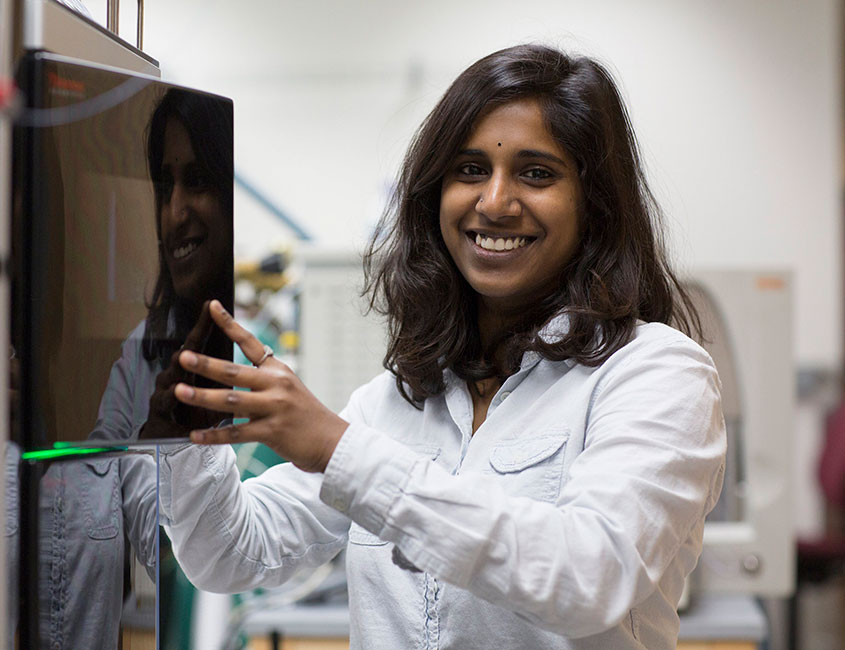While my master’s work focused on geoscience, it also involved microbiology, particularly in the methods we used to study isotope signature in actual rocks or synthetic materials. After completing my master’s, the Morgridge Institute for Research hired me and brought me to the Coon Group to work on metabolic profiling for Alzheimer’s and other projects. My path may seem a bit unconventional, but it’s a reminder that all scientists start off with some amount of lab skill and go from there. It tells you that with all sciences, the big picture is bringing different fields together. Both the Morgridge Institute and the Coon Group are examples of this integration.
It’s a larger environment than I’ve been in before, which creates unique challenges and opportunities. For example, there are a lot of different collaborations—engineering, environmental, material science—not just chemistry or biochemistry. We use different protocols and instrumentation for each sample group, and so become experts in maximizing the potential of the instrumentation we’re using for a variety of tasks.
Professor Coon definitely knows how to put his research out there and reach out to the students. Everyone in the group knows what they’re doing because highly capable scientists are in charge of different areas of specialization within the group, with Professor Coon as the broad impact person at the top. The hierarchy is not about power, but about ensuring that each project gets necessary attention and that students understand their graduate careers as a whole.

